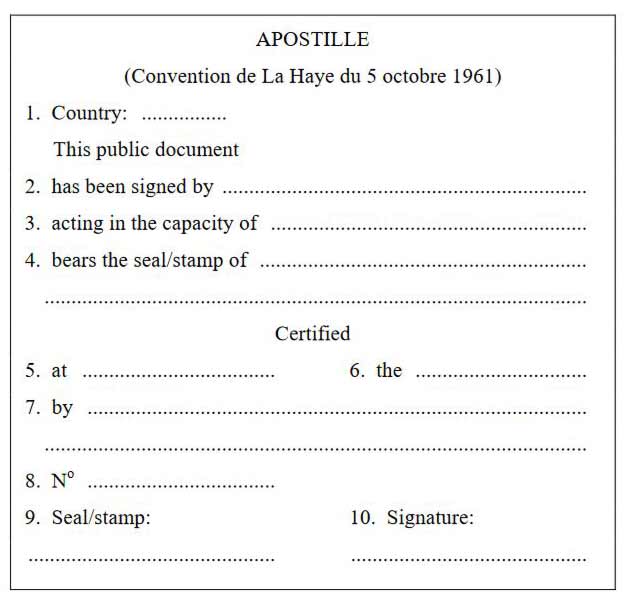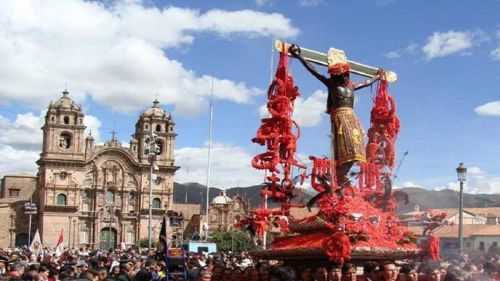- Peru Guide
- Peruvian Visa Types
- Public Holidays & Festivals
- Peru Info
- Culture & Entertainment
- Legal Stuff
- Customs Regulations & Info
- How many days did I get?
- Tourist Visa extension in Peru
- Peruvian Overstay Fine
- International Document for Antecedentes Peru
- Paying Administration Charges
- Permit to Sign Contracts
- Interpol - Ficha de Canje
- Travel Permit
- Subsanacion - Submitting documents
- Extending a Migraciones deadline
- Residence visa extension
- Renewal Carné de Extranjería
- Update Migraciones information
- Carné replacement
- Marrying in Peru
- Driver's License in Peru
- Police Clearance Certificate Peru
- Travel Authorization for Minors
- Finding a Job in Peru
- Domestic Workers in Peru
- Labor Regulations Peru
- Air Passenger Rights
- Safety, Security & Travel Advice
- Shopping in Peru
- Stay Connected
- Business Guide
- Earthquakes
- Emergencies & Help
- History of Peru
- Education, Teaching & Schooling
- Glossary of Terms
- Lima Guide
- Travel & Sights
- Food
- Money
- Events
- Opinion
- Media
- Peru Guide
- Peruvian Visa Types
- Public Holidays & Festivals
- Peru Info
- Culture & Entertainment
- Legal Stuff
- Customs Regulations & Info
- How many days did I get?
- Tourist Visa extension in Peru
- Peruvian Overstay Fine
- International Document for Antecedentes Peru
- Paying Administration Charges
- Permit to Sign Contracts
- Interpol - Ficha de Canje
- Travel Permit
- Subsanacion - Submitting documents
- Extending a Migraciones deadline
- Residence visa extension
- Renewal Carné de Extranjería
- Update Migraciones information
- Carné replacement
- Marrying in Peru
- Driver's License in Peru
- Police Clearance Certificate Peru
- Travel Authorization for Minors
- Finding a Job in Peru
- Domestic Workers in Peru
- Labor Regulations Peru
- Air Passenger Rights
- Safety, Security & Travel Advice
- Shopping in Peru
- Stay Connected
- Business Guide
- Earthquakes
- Emergencies & Help
- History of Peru
- Education, Teaching & Schooling
- Glossary of Terms
- Lima Guide
- Travel & Sights
- Food
- Starter & Appetizer
- Sandwiches
- Soups
- Main Courses
- Salsas, Sauces & Dips
- Desserts
- Snacks
- Drinks & Beverages
- Peruvian Cheese
- Fruits
- Vegetables
- Aji - Chili Peppers
- Grains, Coffee, Beans & Nuts
- Common Herbs
- Other Ingredients
- Money
- Peru Guide
- Peruvian Visa Types
- Public Holidays & Festivals
- Peru Info
- Culture & Entertainment
- Legal Stuff
- Customs Regulations & Info
- How many days did I get?
- Tourist Visa extension in Peru
- Peruvian Overstay Fine
- International Document for Antecedentes Peru
- Paying Administration Charges
- Permit to Sign Contracts
- Interpol - Ficha de Canje
- Travel Permit
- Subsanacion - Submitting documents
- Extending a Migraciones deadline
- Residence visa extension
- Renewal Carné de Extranjería
- Update Migraciones information
- Carné replacement
- Marrying in Peru
- Driver's License in Peru
- Police Clearance Certificate Peru
- Travel Authorization for Minors
- Finding a Job in Peru
- Domestic Workers in Peru
- Labor Regulations Peru
- Air Passenger Rights
- Safety, Security & Travel Advice
- Shopping in Peru
- Stay Connected
- Business Guide
- Earthquakes
- Emergencies & Help
- History of Peru
- Education, Teaching & Schooling
- Glossary of Terms
- Lima Guide
- Travel & Sights
- Food
- Starter & Appetizer
- Sandwiches
- Soups
- Main Courses
- Salsas, Sauces & Dips
- Desserts
- Snacks
- Drinks & Beverages
- Peruvian Cheese
- Fruits
- Vegetables
- Aji - Chili Peppers
- Grains, Coffee, Beans & Nuts
- Common Herbs
- Other Ingredients
- Money
- Peru Guide /
- Glossary /
- Apostille
Apostille
Term Definition Apostille An Apostille is an official sticker, stamp or printed form placed on or attached to a public document by a competent authority in the country of origin that certifies its authenticity for the use abroad; so, a specialized certificate verifying the legitimacy, genuineness and origin of a document.
While the traditional method for authenticating documents to be used abroad, the legalization, involves numerous individual authentications of the document by increasingly higher authorities in the country where it was issued as well as the foreign Embassy or Consulate of the country where the document is to be used, the Apostille greatly simplifies and quickens the authentication process as usually only two (issuing and competent) or three (issuing, higher and competent) authorities are involved.
The legal basis for the Apostille process is the Hague Convention Abolishing the Requirement of Legalization for Foreign Public Documents or short the Apostille Convention.
In which countries does the Apostille Convention apply?
A public document can only be apostilled and used abroad if both the country where it was issued and the country where it is to be used have signed the Apostille Convention. So far over 110 countries worldwide did so including, for example, the US, Canada and most Latin American countries, most European countries, Australia, China, Russia and a few African countries.
Find a comprehensive and updated list of the countries where the Apostille Convention applies on the website of the Hague Conference.
If a document was issued or is to be used in a country which hasn’t signed the Apostille Convention, in most cases a traditional legalization is necessary. Best contact the Embassy or a Consulate of the country where you intend to use the document in order to find out what your options are.
Which documents can be apostilled?
An Apostille is a certificate that authenticates the origin of public documents only. Whether a document is a public document or not is determined by the law of the country in which the document was issued. Generally speaking, public documents for which Apostilles are issued include for example birth, marriage and death certificates, school, university and other academic diplomas issued by public institutions, all sorts of judgements and court decisions, extracts from registers, notarial acts and notarial attestations.
Be aware that some countries only apostille original public documents and refuse an Apostille for certified copies of public documents while others are fine with putting an Apostille on originals and certified copies.
Where to get an Apostille?
A document can only be apostilled in the county where it was originally issued. So, if you are born in the US and need an apostilled birth certificate for use in Peru, you can only get the Apostille on your birth certificate in the US.
Each country that is part of the Apostille Convention has one or several authorities that are entitled to issue Apostilles. As these so-called Competent Authorities and the process varies from country to country best check the official website of the Hague Conference for information on who apostilles a document in the country were it originally was issued (just follow the link of the relevant country).
While for years authorities would only apostille paper documents, some countries started to offer electronic Apostilles (e-Apostille). So, check with the authorities in the country where the document has to be apostilled what your options are.
In Peru, the Ministerio de Relaciones Exteriores is responsible for issuing Apostilles for public documents issued in Peru.
The head office is in Lima (Jr. Miro Quesada 263, Pasaje Acuña interior 155, city center), but you find offices that can apostille Peruvian documents as well in Arequipa (Calle Málaga Grenet 306, Umacollo), Cusco (Av. Diagonal Ramón Zavaleta 117, Wanchaq), Iquitos (Pevas 120), Piura (Av. Panamericana 290, El Chipe), Puno (Calle Conde de Lemus 276), Tacna (corner Calle Blondell block 5 and Av. Luis Basadre) and Tumbes (Calle Los Andes 325).
How much does an Apostille cost?
The costs for having a document apostilled vary greatly by country. You can expect anything between US$ 5 and US$ 40.
And how does an Apostille look like?
The Apostille is a sticker, stamp or printed form consisting of 10 numbered standard fields that are filled in with the relevant information. On the top is the word "APOSTILLE", under which the text "Convention de La Haye du 5 octobre 1961" (French for “Hague Convention of 5 October 1961“) is placed.
 No matter in which country the Apostille was issued, it should conform as closely as possible to this Model Apostille.
No matter in which country the Apostille was issued, it should conform as closely as possible to this Model Apostille.The Apostille is placed directly on the public document itself, either in the front or back, or on a separate attached page (called an allonge). Apostilles may be affixed by various means, including rubber stamps, self-adhesive stickers, impressed seals, etc.
Be aware that an Apostille only certifies the origin of a public document and its legitimacy as well as the authenticity of the signature or seal of the person or authority that signed or sealed the public document and the capacity in which this was done. An Apostille does not certify the content of the public document.
Peru Newsflash
New lizard species discovered in Peru
There is still so much new to find out about and see in Peru. Just recently Peruvian scientists discovered a…Peru has the second-worst drivers in the world
For those living and driving in Peru it comes to no surprise. A recent study by Compare the Market, an…Machu Picchu reopens for the first time after the social outbreak
The Ministry of Culture of Peru decided to re-open Machu Picchu after it was closed on January 21 because of…Peru extends the state of emergency in 44 districts
The Peruvian government extended the “state of emergency” in 44 districts of the central departments of…
Peru Event Calendar
Mon Tue Wed Thu Fri Sat Sun 123456789101112131415161720Date : Sunday, 20 April 202521222324252627282930Upcoming Events in Peru
18Apr20Apr01May03MayMore in the Peru Event & Entertainment Calendar
Latest Content...
- Tourist Attractions & Sights in Peru
Machu Picchu
- International Schools in Peru
International Christian School of Lima - ICS Lima
- Peruvian Visa Types
Peruvian Digital Nomad Visa
- Laws, Norms, Legal Codes & Decrees
Legislative Decree No. 1582 (Modification of the Peruvian Foreigner Law, Nov 2023)
- Peruvian Cheese
Queso Rojo de Lluta
- Peruvian Cheese
Peruvian Queso Andino
- Peruvian Cheese
Peruvian Quesillo
- Peruvian Cheese
Peruvian Queso Mantecoso
- Peruvian Cheese
Peruvian Queso Paria
- Peruvian Cheese
Peruvian Queso Fresco
- Legal Stuff
Extension of a Migraciones deadline
- Legal Stuff
Subsanacion - Submitting documents
- Legal Stuff
Amnesty for Migraciones fines
- Legal Stuff
Replacement for a lost, stolen or damaged carné
Latest Video
Long Reads...
- Peruvian Archaeology
The Mystery of the Nazca Lines in Peru
In the 1920s, when people first flew across southern Peru, they made an astonishing discovery. Stretching below them,… - Peruvian Personalities & Founders
Francisco Pizarro González (1474-1541)
Francisco Pizarro, a peasant from Spain, was one of the least well-equipped conquerors in history. However, in the name… - Peruvian Archaeology
The colorful Fabrics and Textiles of Peru
Europe’s first knowledge of Peruvian textiles was acquired following the Spanish invasion of Peru in 1532, when the… - Peruvian Legends, Myths & Tales
The Jeweled Frog and the Condor
By a quiet pond, at the side of a cloud-topped mountain in Peru, lived a small green frog and his large green family.… - Peru Info
Peruvian Economy
The Peruvian economy is an emerging, social market economy highly dependent on foreign trade and classified as an upper…
Contact us | Editorial Ethics | Support | T&C | Copyright | Privacy | Discussions & Submissions | Cookies Policy | GDPR | CCPA | DMCA




























